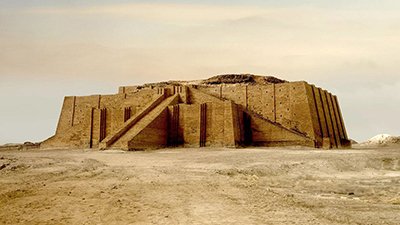Has Anyone Seen God?
Theophanies, Part 1
Some argue that the Bible contradicts itself on whether a person can see God face-to-face—but all biblical data should be considered (in context) before leveling that charge.
My pastor asked “who has seen God (face to face)?” I replied that in Genesis several occurrences take place where several individuals talked, walked, and conversed with God as they would with you and/or me. Examples are Sarah (Sarai), Abraham, Jacob (later renamed Israel) just to name a few that come to mind right now. Needless to say the pastor call me out and quoted a Scripture that says that God has not let anyone see him directly to the face because they would surely die.
—Eddy
As you mentioned, many people in the Old Testament are said to have seen God, such as Abraham (Genesis 18:1–33), Jacob (Genesis 32:30), and Gideon (Judges 6:22–23). So why did the Lord tell Moses that “no man shall see Me, and live” (Exodus 33:20)? And how could John claim, “No one has seen God at any time” (John 1:18)?
The solution to this apparent contradiction seems to be that Abraham, Jacob, Gideon, and others witnessed what theologians refer to as a theophany, from the Greek terms for “God” and “appear.” That is, God appeared to them in human form. Several passages mention the angel of the Lord appearing to people, and this “angel” is even referred to as God in some passages. Christians generally believe that this angel of the Lord is none other than the preincarnate Lord Jesus Christ (i.e., Jesus before his incarnation).
Let’s consider several of these appearances of God to get a clearer picture of this concept.
Abraham (and possibly Sarah)
Genesis 18:1–2 says that the Lord appeared to Abraham in the form of a man (and two angels also appeared as men). Then the Lord told Abraham that he and Sarah would have a child in about a year’s time. Sarah laughed and denied it, but the Lord declared that she did laugh. However, whether she saw him or not (Sarah being inside a tent) is not clear from the text. Then minutes later, in Genesis 18:22–33, Abraham pleaded with God not to destroy Sodom if there could be found (at the last) ten righteous people in the city. In verse 33, we read, “And the Lord went his way, when he had finished speaking to Abraham, and Abraham returned to his place.” Clearly, Abraham saw God in human form at this time.
Jacob
In Genesis 32:24–30, Jacob wrestled with a man all night until daybreak. When Jacob said, “I will not let You go unless You bless me!” the man said, “Your name shall no longer be called Jacob, but Israel, for you have striven with God and with men, and have prevailed” (32:28). Then Jacob called the place Peniel, saying, “For I have seen God face to face, and yet my life has been delivered” (32:30). Jacob saw and wrestled with God in human form.
Job (and His Three Friends)
The text indicates that Job (and likely his “friends”) had not only spoken with but apparently had seen God.
In Job 38:1, we read that “the Lord answered Job out of the whirlwind,” and over the next few chapters, God asked Job a series of questions. Then in Job 42:5–6, Job (in the presence of his friends) contritely answered the Lord, saying, “I had heard of you by the hearing of the ear, but now my eye sees you; therefore I despise myself, and repent in dust and ashes.” Then in 42:7, the Lord spoke to Eliphaz the Temanite and said that he was angry with Eliphaz and his two friends (Bildad the Shuhite and Zophar the Naamathite) and told them to offer a sacrifice for their incorrect words about God. The text indicates that Job (and likely his “friends”) had not only spoken with but apparently had seen God. The text does not tell us whether Job saw God in human form. He may have only seen God in the form of a whirlwind, which would still technically be a theophany, since it is an appearance of God, similar to his appearance as a pillar of cloud and fire in Exodus 13:21–22.
Gideon
In Judges 6:12–16, the Angel of the Lord appeared to Gideon and said that he was going to defeat the Midianites, who were oppressing Israel at the time. Then the Angel of the Lord told him, “But I will be with you, and you shall strike the Midianites as one man” (Judges 6:16). After the Angel of the Lord showed him a sign and then instantly disappeared, Judges 6:22 explains that Gideon perceived that he saw the angel of the Lord. And Gideon said, “Alas, O Lord God! For now I have seen the angel of the Lord face to face.” But the Lord said to him, “Peace be to you. Do not fear; you shall not die” (Judges 6:23). The Angel of the Lord is here identified as God. Thus, Gideon saw God as the Angel of the Lord.
Manoah and His Wife (Samson’s Parents)
In Judges 13:15–23, Manoah and his wife were visited by the Angel of the Lord, who told them how to raise their soon-to-be-born son Samson. Of particular note in this passage is when Manoah asked the Angel of the Lord what his name was. The Angel replied, “Why do you ask my name, seeing it is wonderful?” (Judges 13:18).1 After the Angel of the Lord disappeared from them by ascending in the fire from an offering, Manoah said to his wife, “We shall surely die, because we have seen God!” (13:22). But his wife, realizing that she and her husband had to live to conceive and give birth to the promised son, said to Manoah, “If the Lord had meant to kill us, he would not have accepted a burnt offering and a grain offering at our hands, or shown us all these things, or now announced to us such things as these” (Judges 13:23). The Angel of the Lord revealed himself to Samson’s parents in the form of a man (v. 6).
Moses
Numerous passages seem to clearly indicate God appearing to Moses, who seemed to have unique opportunities for such interactions:
- In Exodus 3:2–6, we read that the Angel of the Lord spoke to Moses from the burning bush and then announced himself as the God of Abraham, Isaac, and Jacob. Moses then hid his face, for he was afraid to look at God.
- In Exodus 33:11, the Lord spoke to Moses face-to-face, as a man speaks to his friend.
- In Numbers 12:8, while rebuking Aaron and Miriam, God says, “With him I speak mouth to mouth, clearly, and not in riddles, and he beholds the form of the Lord. Why then were you not afraid to speak against my servant Moses?”
- In Numbers 14:14, Moses pleaded with the Lord to show mercy to the Israelites after they had sinned again: “[A]nd they will tell the inhabitants of this land. They have heard that you, O Lord, are in the midst of this people. For you, O Lord, are seen face to face, and your cloud stands over them and you go before them, in a pillar of cloud by day and in a pillar of fire by night.”
- In Deuteronomy 5:4, Moses again states that the entire nation of Israel saw God at Mt. Sinai: “The Lord talked with you face to face on the mountain from the midst of the fire.”
- In Deuteronomy 34:10, likely written by Joshua right after the death of Moses, we read, “And there has not arisen a prophet since in Israel like Moses, whom the Lord knew face to face.”
However, Moses was not permitted to see God the Father’s full glory or his face—only his back.
And he said, “I will make all my goodness pass before you and will proclaim before you my name ‘The Lord.’ And I will be gracious to whom I will be gracious, and will show mercy on whom I will show mercy. But,” he said, “you cannot see my face, for man shall not see me and live.” (Exodus 33:19–20)
Then I will take away my hand, and you shall see my back, but my face shall not be seen. (Exodus 33:23)
The second possible solution is that the phrase translated as “face to face” is simply a “Hebrew way of saying that there was a personal communication between God and a human being.”
Some have tried to insinuate that there is a contradiction between these statements about Moses. Did he talk to God face-to-face, or was he not allowed to see God’s face? But there are two plausible, biblically consistent responses to this supposed contradiction. First, Moses may have spoken with God face-to-face and seen him because God may have appeared as the Angel of the Lord. When God appears this way, he does not display his full glory because no one would survive the encounter. This is why he only permitted Moses to see a glimpse of his glory. The second possible solution is that the phrase translated as “face to face” is simply a “Hebrew way of saying that there was a personal communication between God and a human being.”2 That is, the writer was employing an idiom to describe close communication.
Elijah
After fleeing from Jezebel, Elijah became weary, and the Angel of the Lord twice touched Elijah to wake him and told him to eat some food (1 Kings 19:5–8). Once again, we see a physical manifestation of God able to touch Elijah.
John’s Testimony About Seeing God
The Apostle John wrote that it was Jesus who declared the Father to men, and Jesus himself said this twice and stated that whoever had seen him had seen the Father.
No one has seen God at any time. The only begotten Son, who is in the bosom of the Father, He has declared Him. (John 1:18 NKJV)
It is written in the Prophets, “And they will all be taught by God.” Everyone who has heard and learned from the Father comes to me —not that anyone has seen the Father except he who is from God; he has seen the Father (John 6:45–46)
Jesus said to him, “Have I been with you so long, and you still do not know me, Philip? Whoever has seen me has seen the Father. How can you say, ‘Show us the Father’?” (John 14:9)
Conclusion
If the Old Testament theophanies were truly appearances of the Second Person of the Trinity in human form, then those people who saw him were like the disciples in that they saw God as he was revealed in his Son. But they did not, in fact, see all of the Father’s glory. That glory was veiled (either in the form of an angel or in human flesh). Both the pastor and the questioner are correct. No man has seen God in his full glory, but there are many OT saints and NT followers of Christ (quite a bit more than have been mentioned in this brief overview) who have seen God physically manifested in a form that veiled his full glory.
Footnotes
- This is reminiscent of the Messianic titles given in Isaiah 9:6: “For to us a child is born, to us a son is given; and the government shall be upon his shoulder, and his name shall be called Wonderful Counselor, Mighty God, Everlasting Father, Prince of Peace.”
- Gerald L. Borchert, John 1–11: The New American Commentary, vol. 25a (Nashville, TN: Broadman & Holman Publishers, 1996), 124.

Answers in Genesis is an apologetics ministry, dedicated to helping Christians defend their faith and proclaim the good news of Jesus Christ.
- Customer Service 800.778.3390
- Available Monday–Friday | 9 AM–5 PM ET
- © 2025 Answers in Genesis




